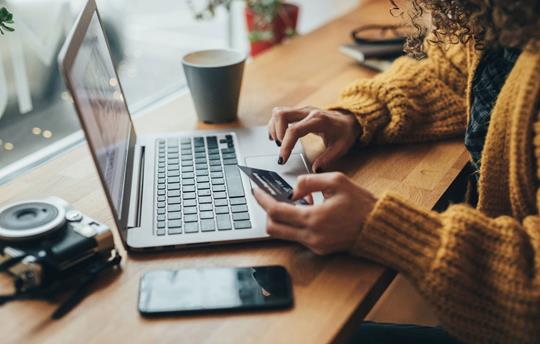3 Retail Philosophies to Optimize Click-and-Collect
9/29/2022 Toni Thompson

I want to share a quick story a colleague of mine told me about this local home repair shop in his neighborhood. (Trust me, it’s relevant.)
Not long ago, he walked in and asked the owners, “Hey guys, how’s business?” The father and son duo replied with a less than enthusiastic “Not good.”
Why not? Well, in short, they felt too many customers were entering, making a beeline to the pickup counter for online orders, and exiting.
To them, the convenience of buy online, pickup in store (BOPIS) ? aka click-and-collect ? was actually detrimental to their business. It made shopping too streamlined. They were missing the bigger picture.
Buy online, pickup in store — the big picture
Before you dismiss BOPIS as another win for online sales, consider the benefits it brings retailers in a traditional sense, from increased customer foot traffic to the potential for impulse purchases.
The reality is, consumers today want more choice and immediate gratification, BOPIS addresses these market demands in a variety of ways:
- Omnichannel accessibility
- Expedited shipping
- Eliminated shipping costs
- Expedited returns
- Diminished need for returns
Parking lots are changing all over the country and, ultimately, BOPIS gives retailers a strategy for drawing shoppers into physical stores, strengthening the consumer-retailer relationship along the way.
If you’re keen on leveraging click-and-collect in the most positive way possible, consider adopting these retail philosophies.
Retail Report: 5 trends that matter most to the brick-and-mortar checkout experience
[FREE DOWNLOAD]
Philosophy No. 1 — Become a center of convenience
- 74% said they chose the option to avoid shipping fees
- 32% said the option was attractive because the store was nearby
- 30% said they didn’t want to wait for delivery and wanted the item that day [source delivery]
As competition with direct-to-consumer brands is alive and well, convenience will continue to be the driving force behind why consumers are going for BOPIS. Moving dedicated pickup to the front of the store, serving as a distribution center of sorts, discounting online purchases for merchandise not currently in-store ? retailers need to do everything in their capacity to make the in-store element as seamless as possible.
Philosophy No. 2 — Become a center for reassurance
People forget this thing called cognitive dissonance. It always sets in regardless if a purchase is a $5 widget or a $5,000 splurge. Consumers are always second guessing.
Did I make a good decision?
Did I buy the best product?
Did I buy the right product?
This uncertainty can lead to buyer’s remorse and returns. Savvy retailers must find ways to be supportive.
Despite all the efficiencies of buying online, consumers might still head to a store to interact with a human to resolve this cognitive dissonance. This presents an opportunity for retailers to get to know their customers better. And according to a Salesforce “Connected Shopper” report, there’s plenty of room for improvement in that area.
Sixty-three percent of shoppers think retailers don’t get them [source connected shopper].
Creating a centralized, highly visible platform for in-store associates to assure customers, “Yes, you made the right decision” or “Try pairing the product you purchased with this and you’ll find even greater success” can have a powerful effect.
Philosophy No. 3 — Become a center for upselling
BOPIS is key to ushering shoppers in the door where they can make additional purchases. Proof: Bell and Howell’s “Click and Collect” study revealed nearly 60% of click-and-collectors will purchase additional items while they’re in the store.
It’s not hard to see how click-and-collect creates opportunities for upselling. The beauty in BOPIS is retailers know what shoppers are coming into the store to pick up. This gives retailers a chance to share knowledge and educate consumers with the right next purchase.
BOPIS creates a competitive advantage for retailers, opening their doors to those shoppers that might not have bothered to deal with brick-and-mortar in their buying journeys. However, brands must remember: these centers for upselling won’t perform without an empowered “mobile-enabled” store associates. In Retail Touchpoints’ 2019 Outlook Guide:
“Deploying mobile devices for associates continues to gain momentum. … In the year ahead, we’ll see more retailers stop tinkering and start upgrading their clientelling and assisted selling practices and training, as part of a broader retail transformation initiative” [sourceoutlook guide].
With BOPIS, all roads lead to a more personalized CX
In pursuit of the truly unique retail experience, Forrester analyst Brendan Miller says “retailers are attempting to create retail theater” but instead fall short with underutilized props that do little to enhance the in-store buying experience [sourcebrick and mortar].
With BOPIS, it’s not about over-the-top theatrics, but simply being there for your customers in the most accessible, supportive way possible. The data gathered from an online sale can always put the retailer in a better position to better understand their customers’ needs and optimize the pickup experience.
If you can start doing this, you’re building momentum for future, personalized interactions.
Toni Thompson is President of RRD Signage and Displays. Looking for more expertise and foresight? We highlight the in-store marketing trends making inroads right now in the brick-and-mortar experience. Access our retail trends report here.